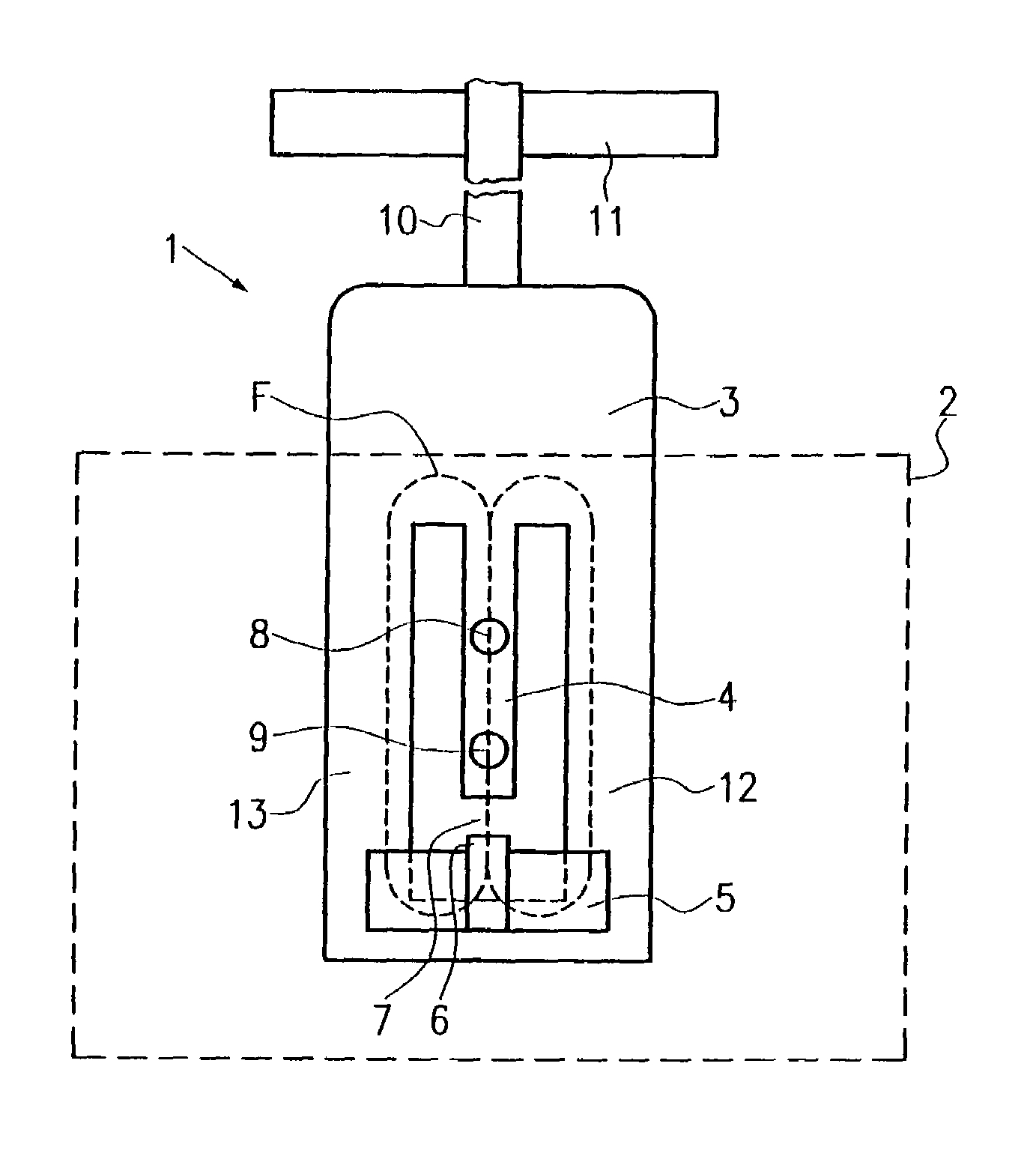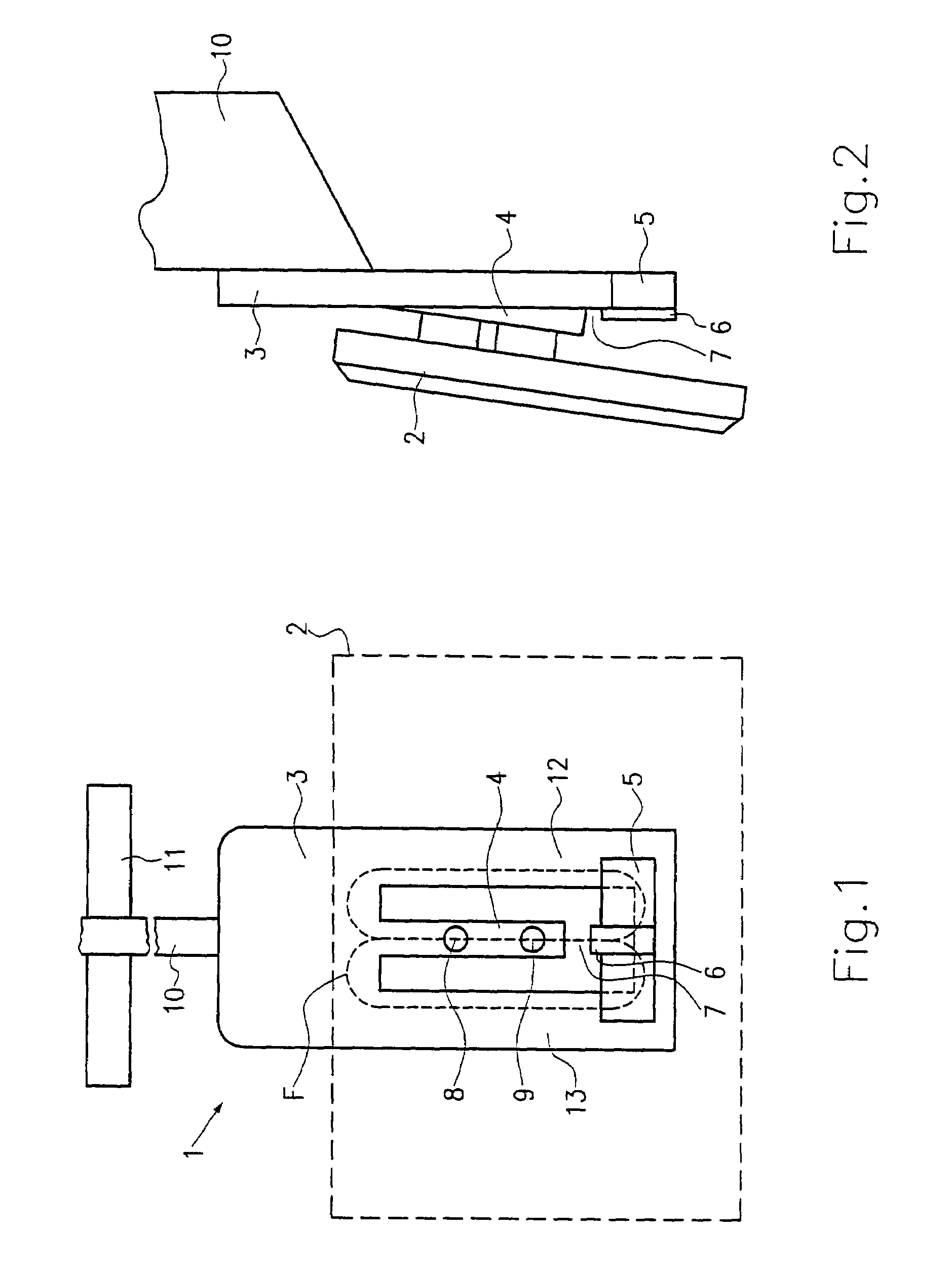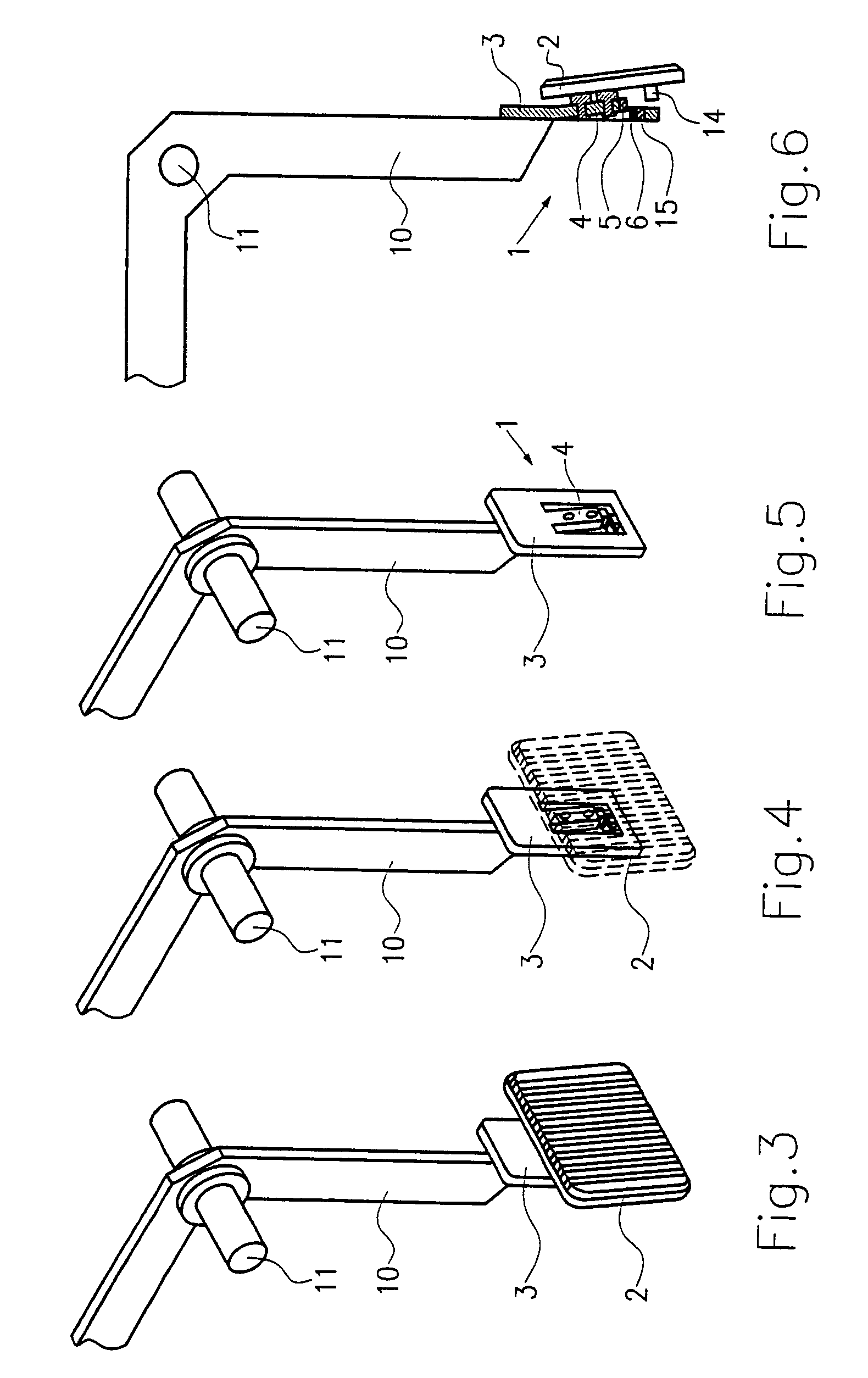Measuring instrument and method for detecting a force
a technology of measuring instruments and force, applied in the direction of instruments, force/torque/work measurement apparatus, mechanical control devices, etc., can solve the problem of not being able to learn what the driver is asking for on the basis of the travel signal, using known travel measuring devices, etc., to achieve the effect of convenient disposal and easy installation
- Summary
- Abstract
- Description
- Claims
- Application Information
AI Technical Summary
Benefits of technology
Problems solved by technology
Method used
Image
Examples
Embodiment Construction
[0025]In FIGS. 1 and 2, a first exemplary embodiment of the force measuring instrument of the invention is shown. This force measuring instrument 1 is used in a pedal assembly of a motor vehicle. As shown in FIG. 1, the force measuring instrument 1 includes a carrier plate 3 and a tongue element 4. The tongue element 4 is formed integrally with the carrier plate 3 and is made for instance by stamping. As shown in FIG. 2, the tongue element 4 protrudes partly from the carrier plate 3. The tongue element 4 is embodied resiliently, so that when the pedal is not actuated, the tongue element returns to its outset position. The tongue element 4 also has two through openings 8 and 9, through which bolts are guided in order to join the tongue element 4 to a pedal plate 2.
[0026]As shown in FIG. 1, the tongue element 4 is embodied in barlike fashion, and an air gap 7 is formed between the tongue element 4 and the carrier plate 3. A magnetically sensitive element 6, such as a Hall element or a...
PUM
| Property | Measurement | Unit |
|---|---|---|
| forces | aaaaa | aaaaa |
| forces | aaaaa | aaaaa |
| force measuring | aaaaa | aaaaa |
Abstract
Description
Claims
Application Information
 Login to View More
Login to View More - R&D
- Intellectual Property
- Life Sciences
- Materials
- Tech Scout
- Unparalleled Data Quality
- Higher Quality Content
- 60% Fewer Hallucinations
Browse by: Latest US Patents, China's latest patents, Technical Efficacy Thesaurus, Application Domain, Technology Topic, Popular Technical Reports.
© 2025 PatSnap. All rights reserved.Legal|Privacy policy|Modern Slavery Act Transparency Statement|Sitemap|About US| Contact US: help@patsnap.com



